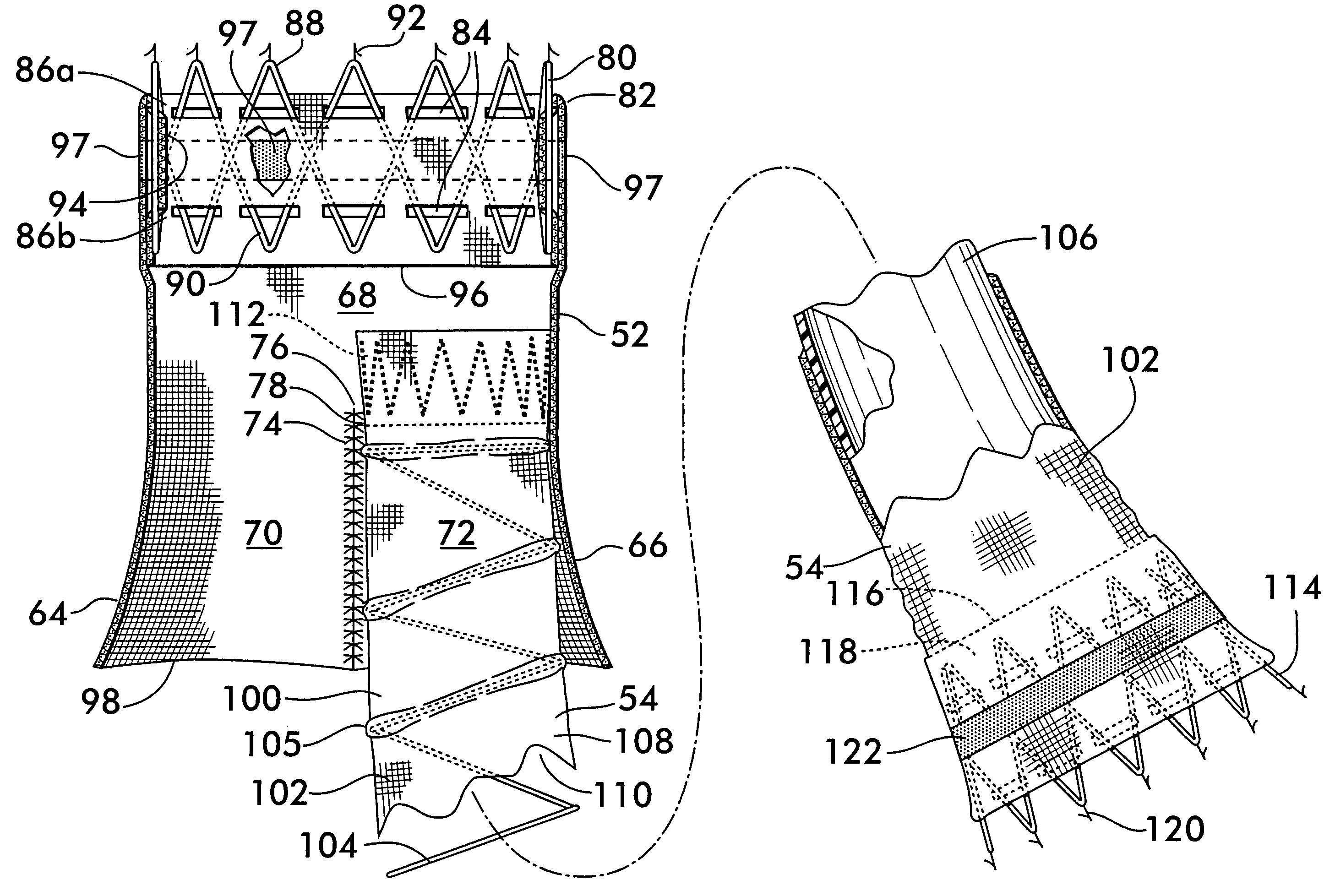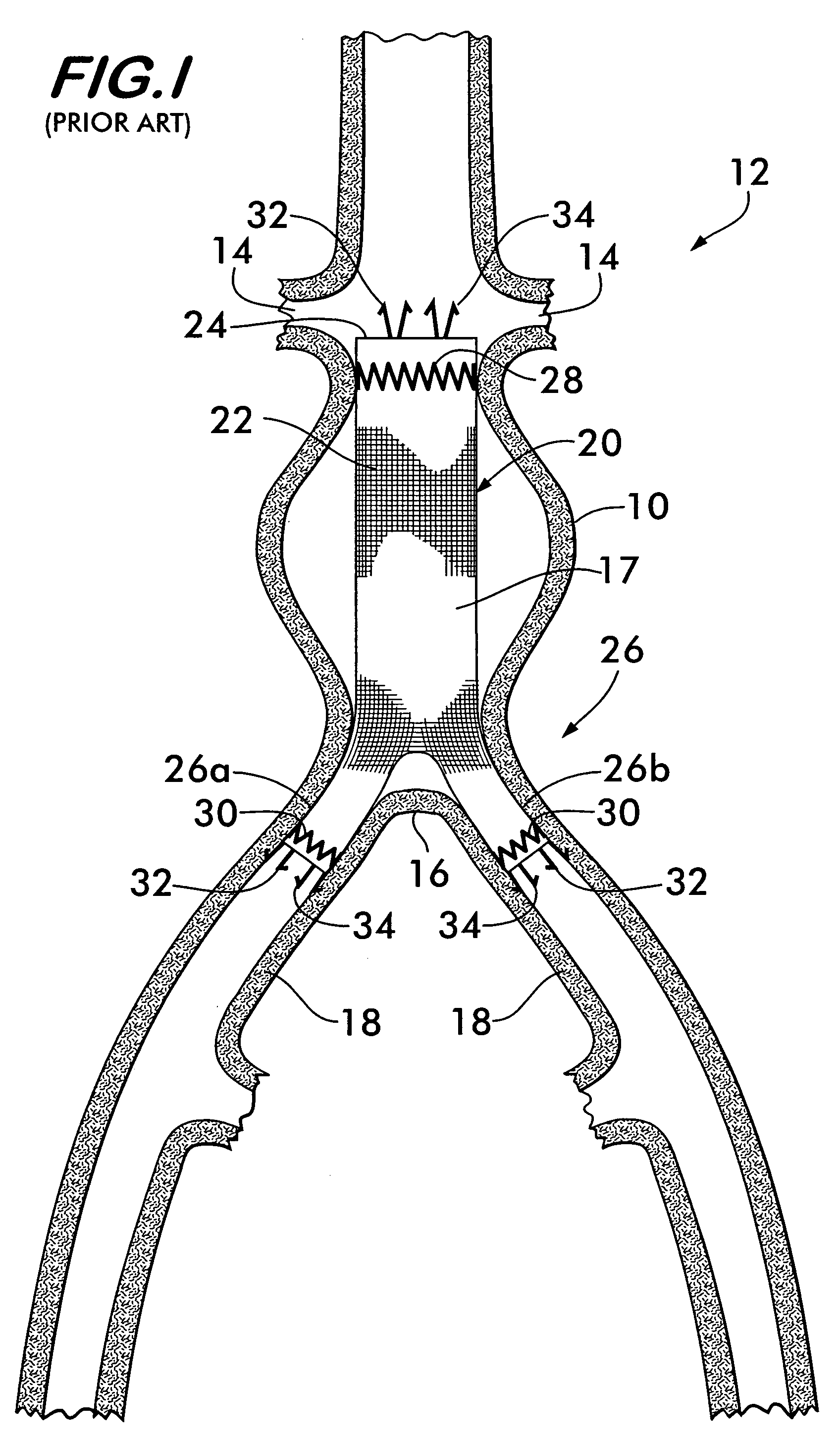Integral support stent graft assembly
a stent and graft technology, applied in the field of stent grafts, can solve the problems of high production cost, troublesome manufacture and use of stent grafts, and fatal acute rupture of aneurysms, and achieve the effects of low production rate, high production cost, and bulky stent grafts
- Summary
- Abstract
- Description
- Claims
- Application Information
AI Technical Summary
Benefits of technology
Problems solved by technology
Method used
Image
Examples
embodiment 150
[0062]FIG. 9 illustrates the use of a integral support stent graft assembly embodiment 150 according to the invention to treat a descending aortic aneurysm 152. As shown in detail in FIG. 10, stent graft assembly 150 comprises a base module 154 having a main central space 156 and four branch central spaces 158, 160, 162 and 164 in fluid communication with the main central space. The central spaces are defined by a perimetral sidewall 166 comprising a main sidewall portion 168 and various branch sidewall portions 170, 172, 174 and 176. As described above, the central spaces are formed by attaching opposing portions of the perimetral sidewall 166 to one another along lines of attachment 178, 180 and 182, each line of attachment having a terminal point forming a respective shoulder 184, 186 and 188.
[0063]As shown in FIG. 9, the distal end 190 of base module 154 has a stent 192 for attachment to healthy aortic tissue. The proximal end 194 is flared to receive limbs 196, 198, 200 and 202...
embodiment 260
[0066]Another embodiment 260 of the integral support stent graft assembly is shown in FIG. 12. Embodiment 260 is useful to repair aneurysm 10 in abdominal artery 12 where there is no healthy tissue region between the renal arteries 14a and 14b and the aneurysm 10 to which the stent graft assembly may be attached. In stent graft assembly 260, a stent 262 attaches a base module 264 to healthy tissue above the renal arteries 14a and 14b. The base module 264 comprises a perimetral sidewall 266 and is subdivided into three compartments, 268, 270 and 272. The division is made using lines of attachment 274 and 278 joining opposing portions of the perimetral sidewall 266 together. The base module 264 is further subdivided into branch sidewall portions 280 and 282 for receiving limbs as described above.
[0067]All three compartments 268, 270 and 272 are in fluid communication with the branch sidewall portions 280 and 282, but the outermost positioned compartments 268 and 272 are also in fluid ...
PUM
 Login to View More
Login to View More Abstract
Description
Claims
Application Information
 Login to View More
Login to View More - R&D
- Intellectual Property
- Life Sciences
- Materials
- Tech Scout
- Unparalleled Data Quality
- Higher Quality Content
- 60% Fewer Hallucinations
Browse by: Latest US Patents, China's latest patents, Technical Efficacy Thesaurus, Application Domain, Technology Topic, Popular Technical Reports.
© 2025 PatSnap. All rights reserved.Legal|Privacy policy|Modern Slavery Act Transparency Statement|Sitemap|About US| Contact US: help@patsnap.com



